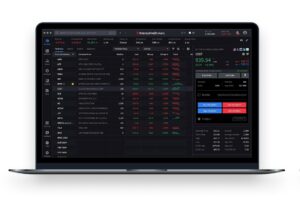The London Metal Exchange (LME) today announced the steps that will follow from the measures outlined in its September 2024 White Paper on Enhancing Liquidity.
Phase 1 changes will be spread across 2025 and the first half of 2026, with further changes to be considered starting in the second half of 2026.
The LME today issued a consultation on the proposed introduction of block trade thresholds and crossing rules, designed to encourage transparency and price competition on the LME’s electronic trading platform, LMEselect.
Following a series of technical workshops, the LME has refined its initial approach and is now proposing to add certain exemptions to ensure members can continue to guarantee client Closing Price orders and to introduce an automated cross solution to reduce operational complexity and ensure the best possible trading experience for clients.
The LME is also proposing a calibrated per-metal block threshold based on a quantitative analysis to ensure the threshold appropriately reflects each market.
To support the physical market and daily date structure, the LME is proposing to further extend the block trade exemptions originally proposed in the White Paper.
Additionally, to support the continued provision of liquidity and trading in daily dates, the LME proposes to expand the short-dated carry definition for an initial period of one year, which will reduce the fees for certain daily spread trades regardless of whether they are executed on LMEselect or inter-office.
Following detailed discussion with market users, the LME is not currently proposing to introduce block-like rules for over-the-counter (OTC) lookalike trades, but it would progress with this proposal should market monitoring indicate that the on-exchange controls were encouraging more trading to take place OTC.
Instead, the LME is proposing to take a fees-based approach to levelling the playing field between on-exchange and the OTC market by increasing the Financial OTC Booking Fee for OTC lookalike contracts. This aims to incentivise behaviour that contributes to price formation and market integrity.
Among the other changes that will be introduced are a liquidity provider programme to support electronic liquidity development, as well as new LMEselect functionality that includes optimising tick size calibration and enabling the roll-out of trade-at-settlement (TAS) functionality across key contracts.
As part of phase 2, the LME intends to progress plans to make all risk transfer trades in the inter-office market transparent on the core LME market data feeds – with appropriate large-in-scale transaction waivers – which would further enhance transparency and fairness for market users.
The LME will also look to progress the proposal to publish OTC trade data as well as open interest data to bring greater market transparency.
Additionally, the LME will continue to implement new LMEselect functionality to support liquidity enhancement measures, such as improvements to implied pricing and self-execution prevention.
The consultation issued today will be open until 13 June 2025 and the LME encourages all stakeholders to provide feedback.









